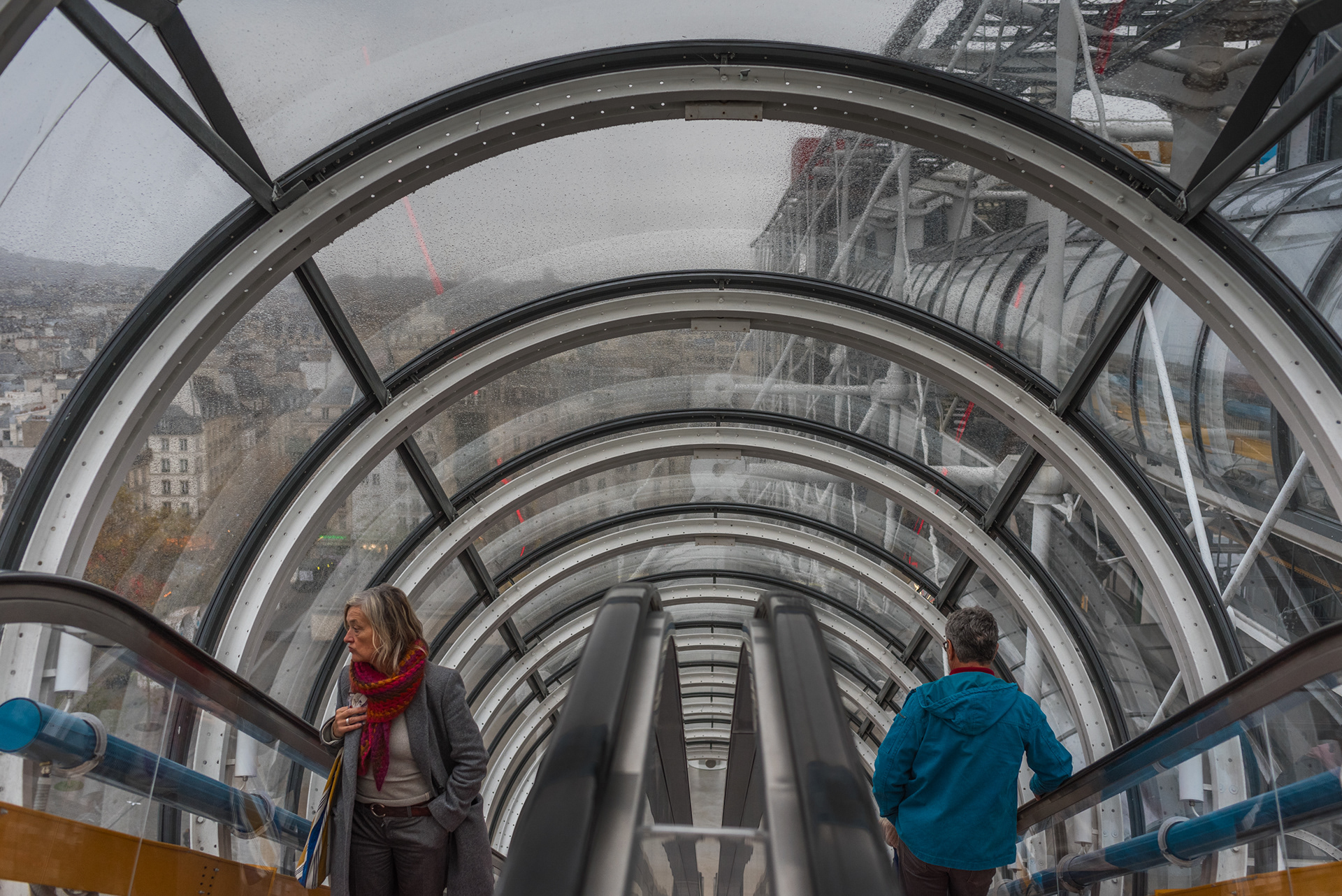The Centre national d'art et de culture Georges-Pompidou, known as the Centre Pompidou, is located in the Beaubourg area of the 4th arrondissement of Paris. The unique building was designed by renowned architects Renzo Piano and Richard Rogers and opened to the public in 1977. The Centre is now considered a major landmark for art and culture.
The colored pipes are one of the architectural characteristics of the extraordinary building, which was also called 'Notre Dame of the Pipes' by its many critics after its construction in the 1970s.


The outside escalator of the Centre Pompidou provides access to the six floors of the building. The terrace offers an excellent panoramic view of the rooftops of Paris and famous landmarks such as the Sacré-Cœur and the Eiffel Tower.



An immense 10-metre-high multi-purpose space is the first place visitors encounter at the Centre Pompidou. A central hub provides access to all the other areas of the cultural complex. The 'Café Le Central', designed by Spanish designer Jaime Hayon, overlooks the Forum.
Located on the 1st, 2nd and 3rd floors of the Centre Pompidou, the Public Information Library (Bibliothèque publique d'information or Bpi) offers study areas, large collections of various media to be consulted on site and organises cultural activities.




The Centre Pompidou hosts a wide range of art exhibitions and has the largest collection of modern and contemporary art in Europe.


Known as the 'Caterpillar', the red illuminated escalator is an important part of the Centre Pompidou's architecture, especially at night.